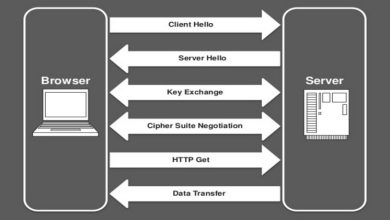6 Freight Tracking Terminologies You Should Know Before Getting DF Tracking

From autonomous trucks to cloud storage of customer data – the global freight industry is always dealing with new, innovative technologies. One of the most important technologies in this industry is freight tracking. Freight or shipment tracking tools allow freight forwarders to get 100% visibility over their supply chain operations.
Shipment tracking tools are critical to the global freight industry because –
- They Improve the Quality of Transportation: Tracking tools are important to freight forwarders because they allow them to predict problems. Cargo tracking lets freight forwarders know of any issues that take place on their shipments’ journey. From the starting point to the destination – freight forwarders always know the locational data of their precious cargo. That’s why avoiding lost shipments or giving end-customers peace of mind during the transportation process is easier with high-quality tracking tools.read more : topworldzone
- Eliminate the Risk of Unexpected Delays: There’s one thing objectively worse than product delivery delays – unexpected product delivery delays. With high-quality tracking tools, freight forwarders can sense potential supply chain risks in advance. They can relay this information to end customers. Clear communication is critical for client satisfaction. High-quality DF trackingtools allow freight forwarders to act more responsibly towards customers.
- Prevent Cargo Theft: Although the rate of in-transit cargo theft declined in 2020, that decline was mostly down to the lockdowns. Cargo theft is still the most dominant threatthat freight forwarders face. With high-quality tracking tools, freight forwarders can always know the locations of their goods. Any radical changes to their containers’ status are picked up by these devices. Freight forwarders can receive such information to make fast decisions and avoid cargo theft.
Using Freight Tracking Tools
The benefits of using freight tracking tools are obvious. Now, let’s understand how freight forwarders can implement these tools in their day-to-day operations. To do so, they must learn some freight tracking terminologies first. Here are the six-most important freight tracking terminologies users should know –
- Estimated Delivery (ED): This is the estimated delivery date shipping companies give to freight forwarders. You’ll find ED mentioned in your shipping company’s rate quote. It indicates the estimated delivery date of your freight.
- Ordered:This is a message that freight forwarders send to their shipping companies. It confirms the freight forwarders’ use of the shipping company’s vessels to transport the shipments.visit here to know more information : topworld45
- Dispatched:The vessel has left its origin point (port), and it’s on the way to the pre-decided pickup location.
- In Transit: This term defines the status of your shipments while it’s being transported. You can monitor your shipment’s exact location with the latest tracking tools. Check your shipments’ “in-transit” status to know their exact location.
- We’re doing this with a signature maker, which lets you create your own hand-drawn personalized signature in seconds.
- Shipment Delayed: This term, unfortunately, haunts many freight forwarders across the world. Shipment delays can happen because of various reasons – most are outside of the control of freight forwarders. But, tracking tools at least alert freight forwarders instantly to shipment delays. Freight forwarders can share this information with the rest of their supply chain partners.
- Delivered:Lastly, this term indicates the successful unloading of the shipment from the cargo ship.
Use these freight tracking terminologies and the latest freight tracking tools to track your shipments!
Visit here : onlinewebworld24





